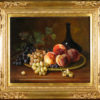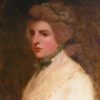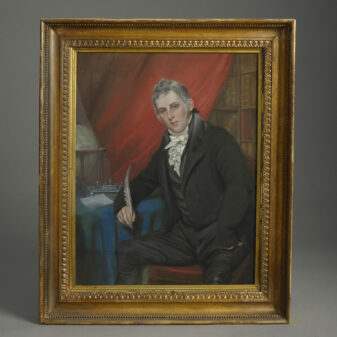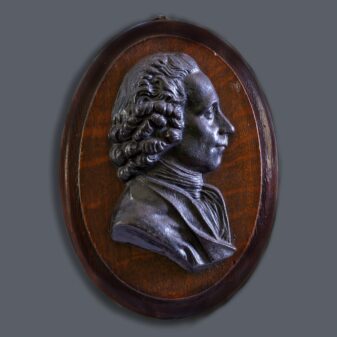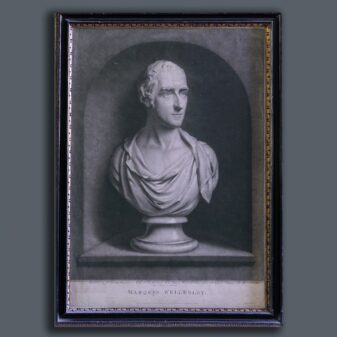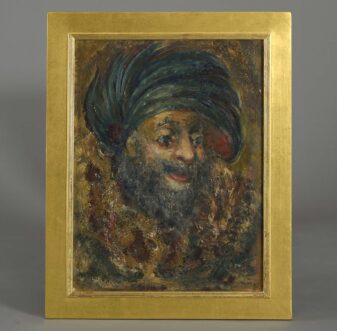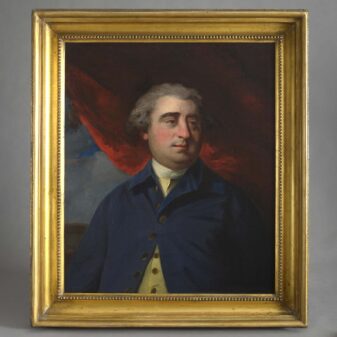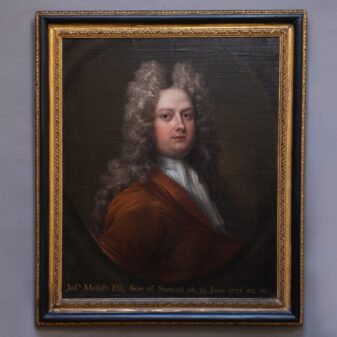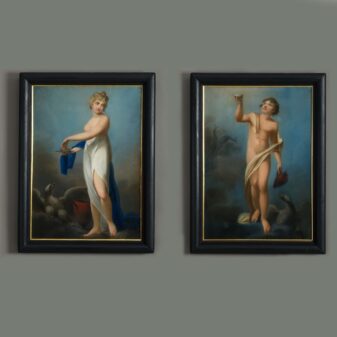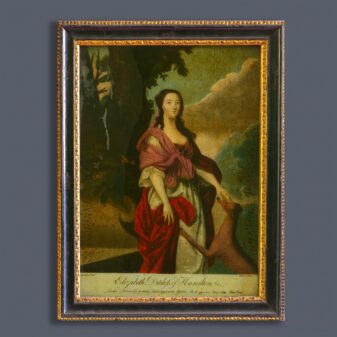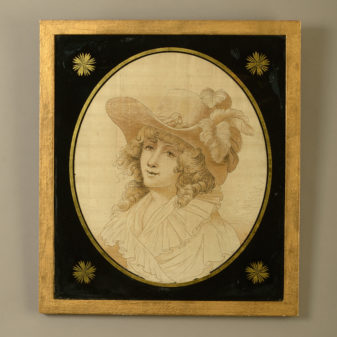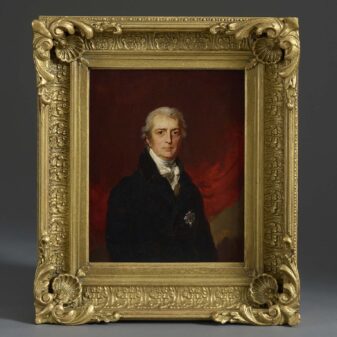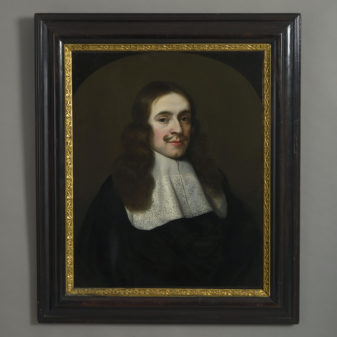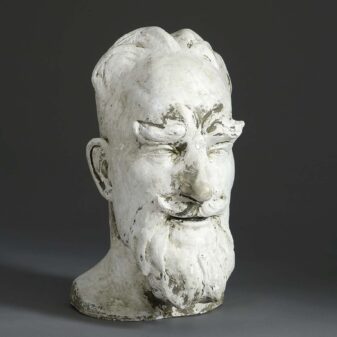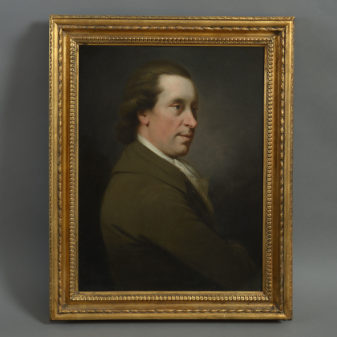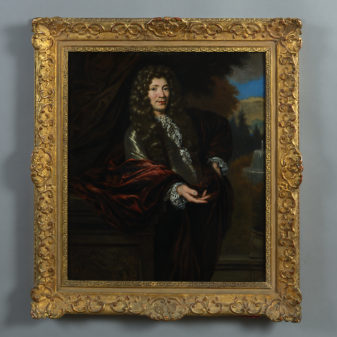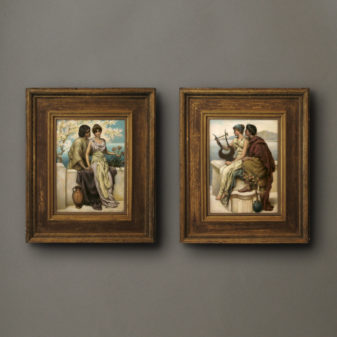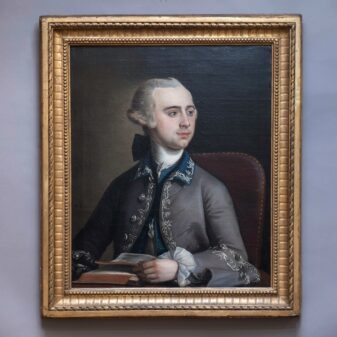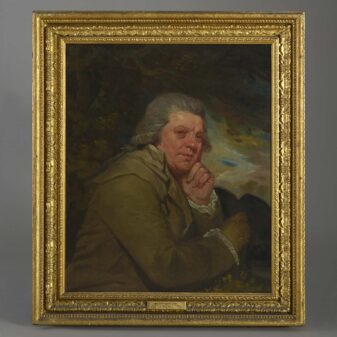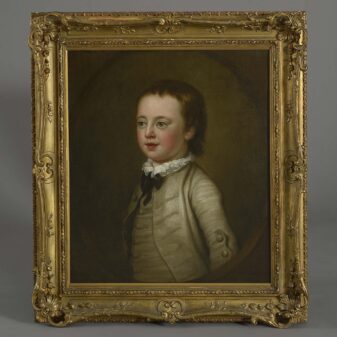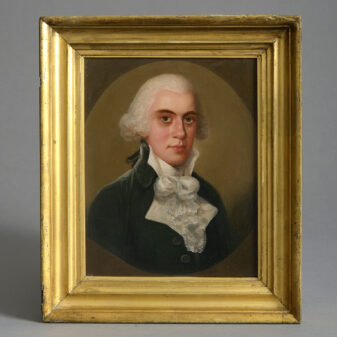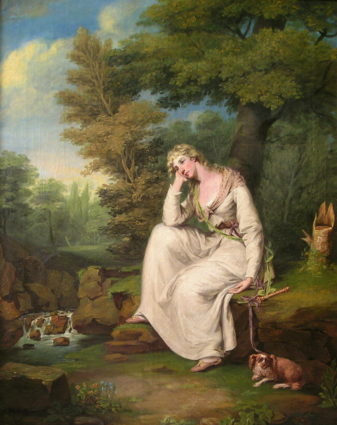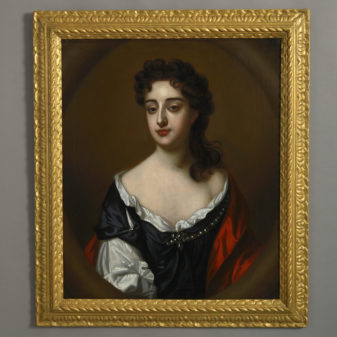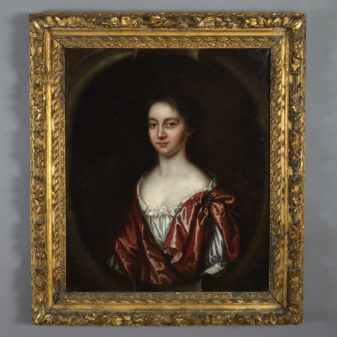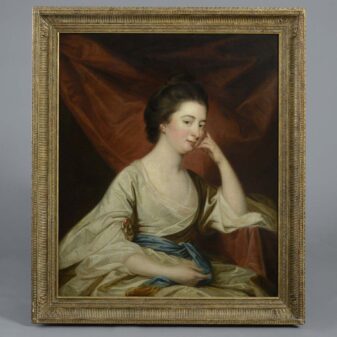Francis Wheatley (1747-1801)
£4,500
SOLD
George Coleman the younger (1762-1836)
George Colman the younger was a playwright, writer of scurrilous satiric verse, and theatre manager whose comic operas, farces, melodramas, and sentimental comedies were box-office successes in the late 18th and early 19th centuries.
An intelligent young man he passed from Westminster School to Christ Church, Oxford, and King’s College, University of Aberdeen, and was finally entered as a student of law at Lincoln’s Inn, London. While in Aberdeen he published a poem satirizing Charles James Fox, called The Man of the People; and in 1782 he produced, at his famous father’s playhouse in the Haymarket, his first play, The Female Dramatist, which was unanimously condemned, but his next Two to One (1784) was praised and a success. It was followed by Turk and no Turk (1785), a musical comedy; Inkle and Yarico (1787), an opera; Ways and Means (1788); The Iron Chest (1796), The Poor Gentleman (1802); John Bull, or an Englishman’s Fireside (1803), his most successful piece; The Heir at Law (1808), and numerous other pieces, many of them adapted from the French.
He took over The Haymarket theatre on the death of his father in 1794 but his life was plagued with financial insecurity and difficulties resulting in a long spell in debtor’s prison. Here he resided for many years continuing to direct the affairs of his theatre and was finally released through the intervention of King George IV, who appointed him in 1824 Examiner of Plays, more commonly called Licenser, a post made vacant by the death of John Larpent. In effect this gave him complete authority to censor any plays or parts of plays that he deemed immoral, overly political blasphemous, or otherwise dangerous. It was position some of his contemporary playwrights considered he abused by being a hypocritically severe censor. However actors recalled his generosity and humanity, friends remembered his readiness to help them, proprietors his straightforward business manner and the public his entertaining productions.
Given the style of clothes and general manner of painting, this portrait was probably finished sometime around Colman’s success of his work Inkle and Yarico which opened in August 1787. The artist Francis Wheatley was a well known painter of stage personalities and this intimate portrait displays much character and liveliness of form. The art historian Sir Ellis Waterhouse noted ‘He was a neat portraitist, with clear and attractive colour’ and John T. Hayes has described ‘the crisp handling of paint, the minute attention to detail in the costume, the lovely delicate tonality’ as typical characteristics of Wheatley’s work, all of which can be appreciated within this image of the youthful theatrical impresario. An engraving, quite similar to this portrait, is with the Heinz archive, National Portrait Gallery, London
Born and trained in London at William Shipley’s academy, Francis Wheatley began winning drawing prizes from the Society of Artists at an early age and in 1763 travelled abroad to Holland, Belgium, and France. He enrolled at the new Royal Academy schools in 1769 and by 1770 was elected a Fellow of the Society of Artists, becoming its Director in 1774. Wheatley’s early work consisted mainly of interior decorative projects and of small-scale, full-length portraits and conversation pieces, which stood him in good stead but the youthful artist consistently suffered financial difficulties due to a gambling problem and a love of the extravagant lifestyle of London high society. In 1779, with the help of a loan from the painter Benjamin West (1738-1820), and to escape creditors, he eloped to Dublin with the wife of J. A. Gresse (1740-1794), another artist. For four years Wheatley worked predominantly as a portrait painter, his work recalling the manner of Johan Zoffany (1733-1810) and Benjamin Wilson (1721-1788), under whom Wheatley may well have studied. He also completed a number of large-scale paintings depicting contemporary events his most famous being `The Irish House of Commons’. On his return to London in 1783, still probably hounded by debt, he began working for the print publisher John Boydell producing engravings after his paintings of many scenes that, to the modern eye, appear fairly sentimental and moralizing, but at the time were widely appreciated and have secured his lasting reputation. He also continued to paint genre pictures, portraits, landscapes, and some history paintings. Wheatley was elected to the Royal Academy in 1791 but his last years were plagued by gout and continuing debt.

